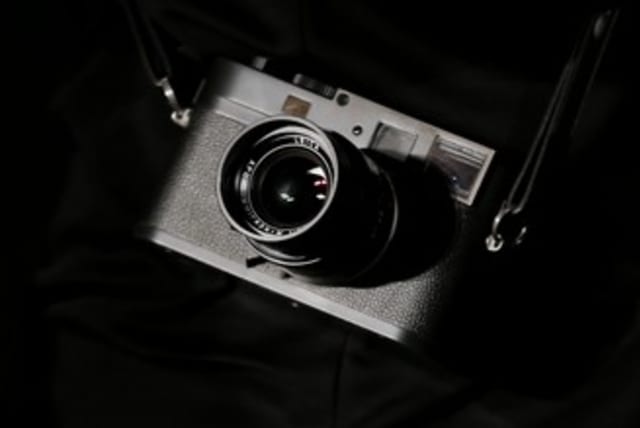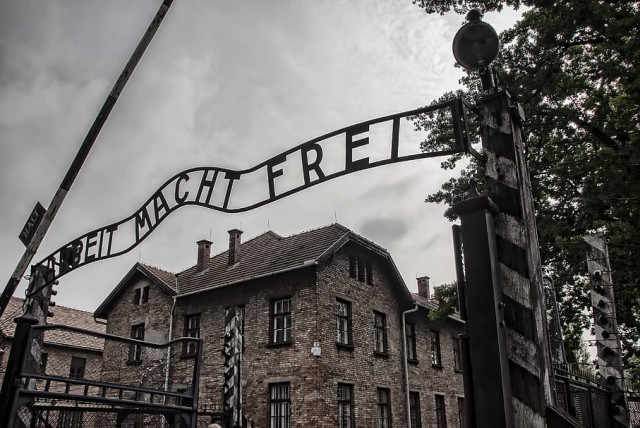'The Lonka Project': Pictures of Jews from world leading photographers - review

The images are of people from a variety of professions, national origins, and streams within Judaism.
It’s a 510-page hardcover book filled with magnificent photographs by some of the world’s leading photographers, who provided their work gratis. The Lonka Project is the kind of book one wants to look through again and again, not just to see the images but also to read the brief texts that accompany them.
It’s not a typical coffee table book. The images are of people from a variety of professions, national origins, and streams within Judaism. Some of the people don’t adhere to any stream and are totally secular, while others run the gamut of Jewish belief and practice from Reconstructionist to ultra-Orthodox. Some are deceased, while many more are alive, at an advanced age. Those who live in Israel reside in kibbutzim, moshavim, and urban areas scattered all over the country. Some are well known, others are more or less anonymous. What they all have in common is that they are Holocaust survivors, all of whom have successfully rebuilt their lives, and in several cases have also achieved fame. Most have raised families and are today grandparents and great-grandparents.
One would think that in the more extreme cases of survivors, those who went from the ghetto to the labor camp and on to the concentration camp, and then the death camp, and finally on a death march, that they would be broken in spirit, especially on discovering after they were liberated, that most or all of their closest relatives had been murdered.
But no, many seized the chance to fight in Israel’s War of Independence because it gave purpose to their lives, and transformed them from victim to defender.
It is remarkable that those who survived death camps and death marches were able to live what is referred to as “a normal life.” They were able to smile, laugh, sing and dance. Those who survived Auschwitz make no effort to hide the number tattooed on their arms. What was once a mark of shame is now a mark of pride as they count the years in which they have outlived their Nazi tormentors and oppressors and the vicious antisemites who collaborated with them.
One of the current watchwords of our times is “trauma.” After Auschwitz, Treblinka, Sobibor, Majdanek, Chelmo, and Belzec extermination camps, labor camps, and death marches, it would be more than natural for survivors to suffer trauma – and indeed they did before trauma was widely recognized as a disorder which would eventually be treated.
How did The Lonka Project come about?
The book The Lonka Project is the brainchild of top-ranking internationally recognized photo journalists Jim Hollander and Rina Castelnuovo Hollander. Jim is the son of Gino (Eugene) Hollander, an American soldier who fought in World War II and was awarded a Bronze Star and two Purple Hearts. Rina is the daughter of Dr. Lonka (Eleonora ) Nass – for whom the project is named - and Dr. Yanek Nass, each of whom survived under different, life-threatening circumstances and came to Israel together after the war. They were married for 70 years.
When the concept of the project was brought to Ilan Greenfield, the CEO of Gefen Publishing House, he immediately agreed. Given that his mother, Hanna Lustig Greenfield, had been a Holocaust survivor and the initiator of Holocaust remembrance projects in her native Czechoslovakia, he could not do otherwise.
The foreword to the book is written by prize-winning author David Grossman, who in previous writings of the Holocaust noted that he and other Israeli children who grew up in the 1950s lived in “a thick and densely populated silence.” In his neighborhood, people screamed every night from their nightmares. The word “Germany” was taboo. If anyone spoke of the Holocaust, it was in terms of what happened there or what happened then. The horrific events were not discussed in front of children, and adults’ conversations about the war ceased as soon as a child walked into the room.
Today, as Holocaust survivors become fewer in number, there is an urgency in getting them to tell their stories either in print or on video so that they can be preserved for future generations who will never meet a Holocaust survivor, to serve as both a warning and a triumph.
Taking into account the timing of the book’s release, January 28, 2024, which was the day after International Holocaust Remembrance Day, it also serves as a beacon of hope for those Israelis who believe that after what happened on and after October 7, 2023, Israel will never be the same. But the Jewish world survived the Holocaust and rebuilt itself; and Israel survived a number of wars, such as the War of Independence and the Yom Kippur War. It will also survive the atrocities of October 7.
The cover of the book is graced by a portrait of eminent photographer Dorothy (Israelit) Bohm, who was born not quite a hundred years ago in Konigsberg, East Prussia. She lived under Nazi rule until she was 14, when her family sent her to England. Her father, an enthusiastic amateur photographer, had given her his Leica camera as he bade her farewell at the train station. The camera proved to be the most important legacy that he could have given her. It brought her widespread recognition and many honors. She passed away in March 2023, three months shy of her centenary. Of her work, she is quoted as saying: “I’ve seen a lot, but I don’t show the ugliness of life. I try to show the good.”■
- The Lonka Project
- Jim Hollander and Rina Castelnuovo Hollander
- Gefen Publishing House, 2024
- 510 pages; $65 or NIS 270
Jerusalem Post Store
`; document.getElementById("linkPremium").innerHTML = cont; var divWithLink = document.getElementById("premium-link"); if (divWithLink !== null && divWithLink !== 'undefined') { divWithLink.style.border = "solid 1px #cb0f3e"; divWithLink.style.textAlign = "center"; divWithLink.style.marginBottom = "15px"; divWithLink.style.marginTop = "15px"; divWithLink.style.width = "100%"; divWithLink.style.backgroundColor = "#122952"; divWithLink.style.color = "#ffffff"; divWithLink.style.lineHeight = "1.5"; } } (function (v, i) { });

